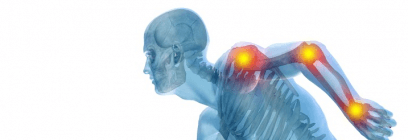One of the most frequently observed injuries in athletics is the foot sprain. This injury often happens when an athlete lands awkwardly or twists their ankle during a match. Symptoms of an foot sprain include pain, swelling, and trouble walking. Prompt treatment typically includes the R.I.C.E. approach, which stands for Recovery, Ice, Wrapping, and Lifting. This approach aids reduce inflammation and pain. In more severe cases, rehabilitative treatment may be necessary to regain strength and mobility to the ankle before going back to athletics.
Another common trauma is a muscular injury, which can occur in all sport that demands quick actions or intense lifting. Athletes may suffer a muscular injury when they extend a muscle too much or when they exert too great effort. Signs include sharp discomfort, swelling, and muscular spasms. Rehabilitation for muscular strains often entails gentle flexibility exercises and conditioning exercises. Slowly increasing exercise levels is vital to prevent recurrence. Athletes try these out should collaborate closely with a rehabilitative specialist to create a safe and efficient rehabilitation strategy.
Tendonitis is another trauma that can impact athletes, particularly those who engage in repetitive motions, such as joggers or aquatic athletes. This issue happens when a tendon structure, which connects muscle to bone, becomes inflamed. Frequent locations involved by tendon inflammation include the arm, upper arm, and knee. Symptoms often include pain and stiffness, especially during activity. Care for tendon inflammation usually includes rest, ice, and anti-inflammatory medications. In some situations, rehabilitative treatment may be recommended to improve flexibility and power in the injured region.
Avoiding athletic injuries is just as crucial as addressing them. Sportspeople can minimize their risk of trauma by warming up properly before events, using the appropriate equipment, and keeping good fitness condition. Power training and flexibility exercises can help prepare the body for the demands of sports. Additionally, sportspeople should listen to their physical condition and allow breaks when needed. By understanding frequent athletic traumas and applying effective rehabilitation plans, sportspeople can remain healthy and participate in their beloved sports for a long time to follow.
